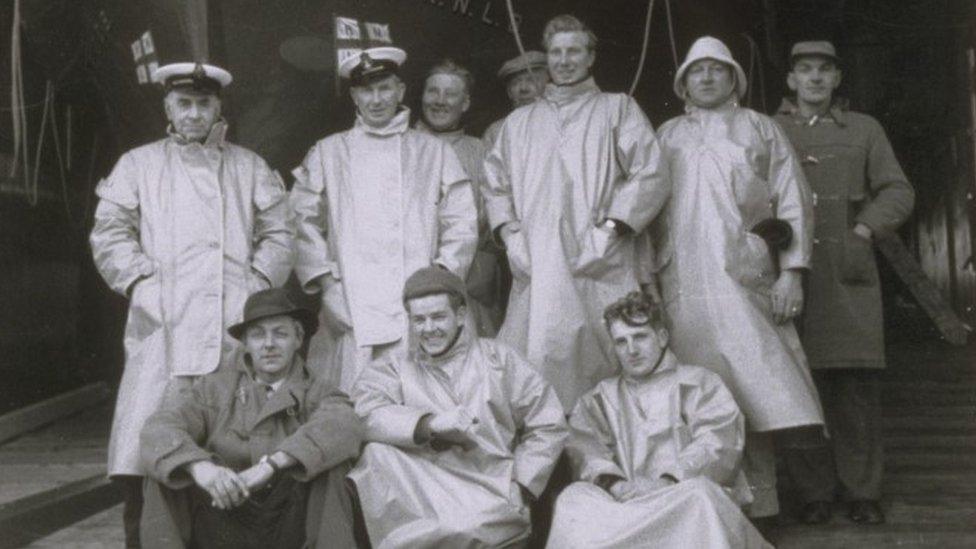Lifeboat tragedy was one of Arbroath's darkest days
- Published
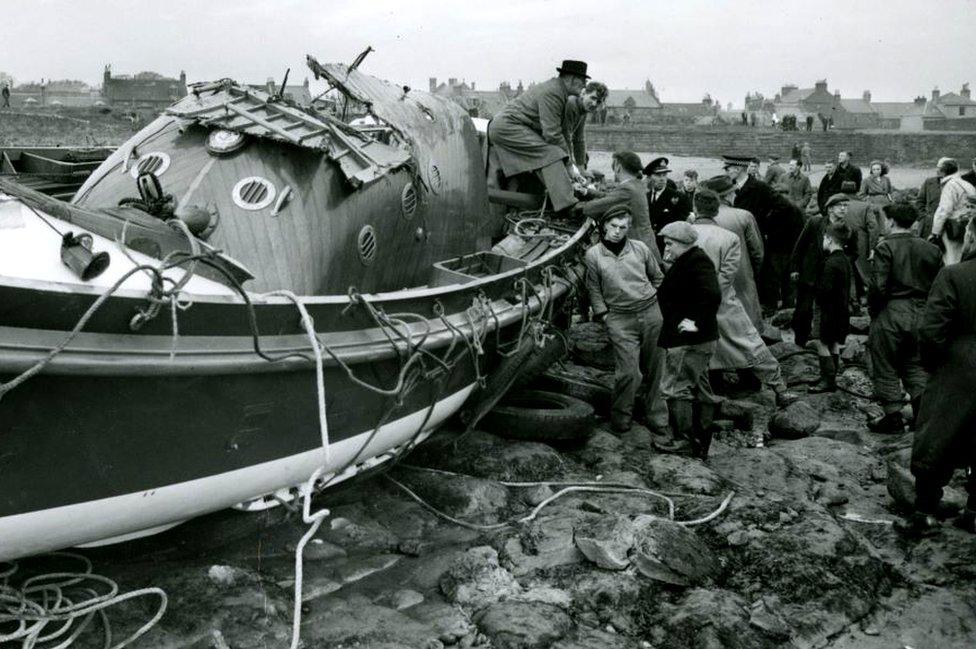
The Robert Lindsay lifeboat capsized on its return to the harbour on 27 October 1953
It is remembered as one of Arbroath's darkest days, a lifeboat tragedy that claimed the lives of six crew members.
On the 70th anniversary of the Arbroath lifeboat disaster, the Royal National Lifeboat Institution (RNLI) has honoured its lost men by laying wreaths at sea and in the cemetery in which they are buried.
It was 27 October 1953 when the Robert Lindsay lifeboat was launched after distress rockets were seen three miles east of Fifeness.
Hours later, as the lifeboat made its return to harbour, it capsized - killing all but one crew member, second coxswain Archibald Smith.
Today, many relatives of the men who died still work for the lifeboat charity in Arbroath.
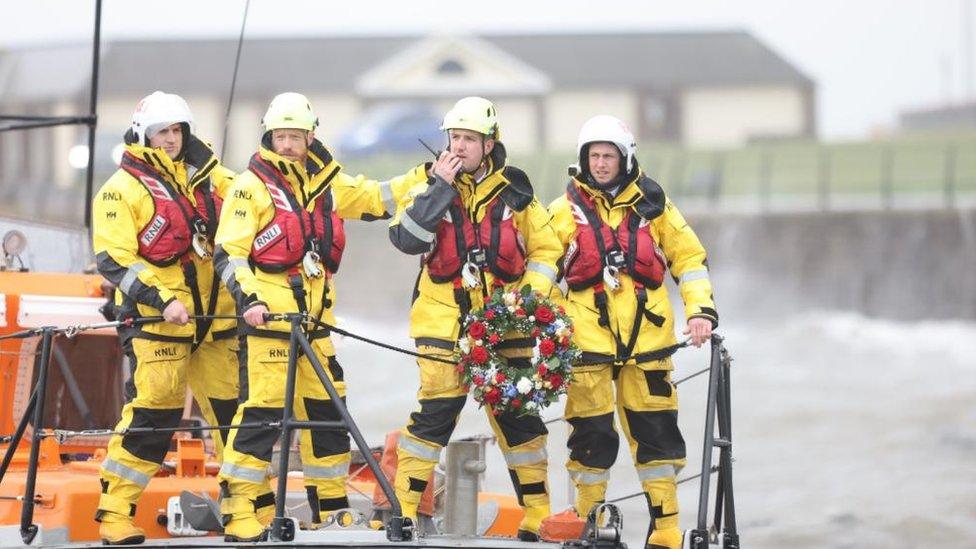
An RNLI crew laid a wreath at sea in memory of the men who were lost
Current volunteer coxswain Michael Marr believes it is important that the town and the organisation continue to remember their sacrifice.
He told BBC Scotland News: "It's gone down as one of the darkest days in this town's history.
"Almost the whole town felt the impact of it. There's people alive who still remember that day vividly, so it's really important that we remember that."
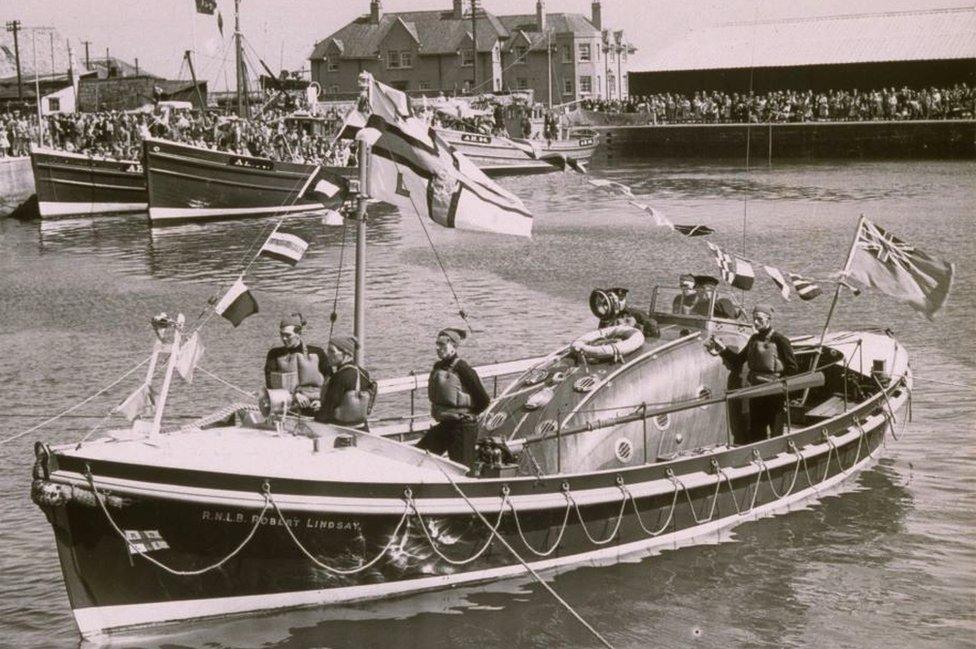
Many of the seamen who crewed the Robert Lindsay lifeboat worked alongside family members
Michael believes it is a testament to the charity's members that relatives of the men killed in the Arbroath disaster still volunteer to serve on the boats.
"Everyone who is part of the RNLI understands what we're here to do," he said.
"It's a sacrifice, it's to risk your lives for others.
"And we're going out in the same water where those people died."

The tragedy was witnessed by locals who who were watching the lifeboat's return to shore
The distress rockets on that night in 1953 are believed to have come from a ship called the Islandmagee, which also sank with the loss of its six crew.
The Arbroath lifeboat joined the search for the stricken ship in very rough conditions, with strong winds and heavy swells.
At 04:20 the lifeboat sent a radio message suggesting it should return to harbour but would wait until daylight to see the conditions at Arbroath sandbar, which lay 300 yards east of the harbour piers.
At 05:00 the coxswain sent a message saying they expected to reach harbour in 20 minutes.
But they never made it back. As the boat struggled to navigate its way towards safety in the rough seas, it was struck by a steep wave, capsizing it instantly.
The tragedy was witnessed by scores of onlookers who were watching the lifeboat's return to shore. They watched as the boat's lights disappeared at 05:47.
The coastguard rushed to the scene and managed to haul Archibald Smith ashore.
Sadly, his six crewmates all lost their lives.
Family victims
The victims included two brothers, Charles and David Cargill, aged 28 and 29.
The oldest crew member was Harry Swankie, at 63. He died alongside his nephew William Swankie, aged 30.
The two remaining casualties were coxswain David Bruce, 48, and bowman Thomas Adams, 33.
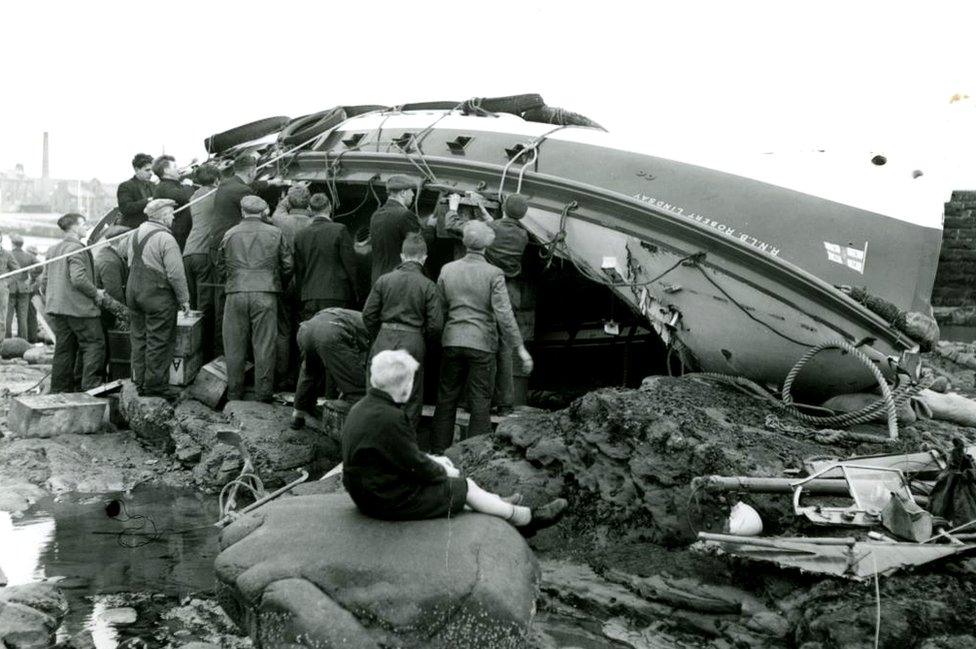
Six men died and just one crew member survived
The Arbroath lifeboat disaster has had a lasting affect on both the town and the RNLI.
The tragedy helped the organisation look at processes and equipment that could help save lives in the future.
Coxswain Michael Marr said: "We learned a lot from this disaster.
"It's making sure that we're sending the right crews out with the right equipment in the right weather."
- Published9 February 2013
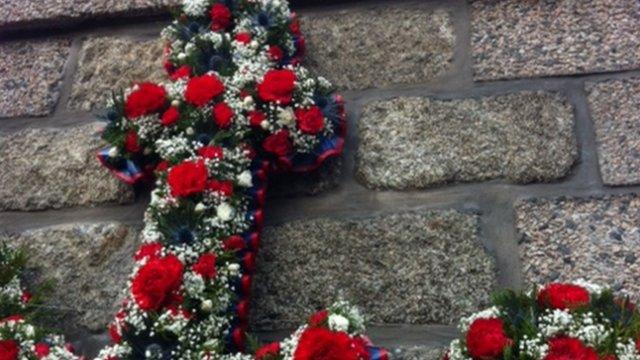
- Published17 March 2019
